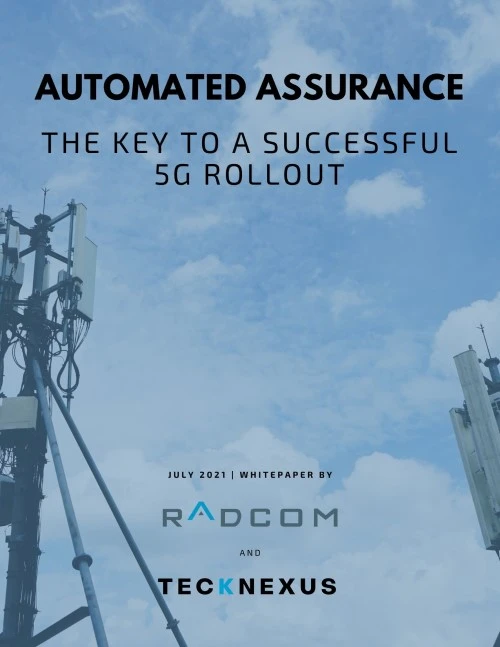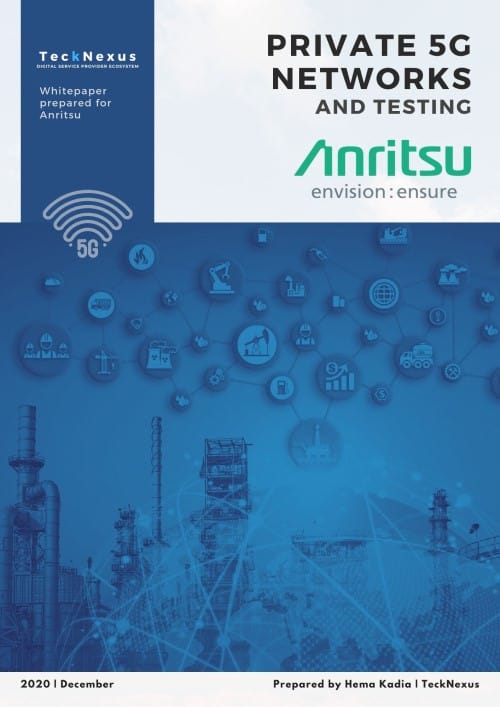Transforming Connectivity: Skylo Technologies and Satellite-Enhanced Cellular Networks
In this episode of the 5G Guys, hosts Dan McVaugh and Wayne Smith dive into the topic of satellite-augmented cellular services. Joined by Tarun Gupta, Co-founder and Chief Product Officer of Skylo Technologies, they discuss how existing satellite licensed spectrum enhances cellular connectivity. The conversation explores the technical details, regulatory challenges, and potential applications of Skylo’s NTN (Non-Terrestrial Network) service, which connects existing devices to satellite infrastructure. Key comparisons are made with solutions offered by companies like Apple, AST SpaceMobile, and Starlink. Gupta also shares insights on IoT, narrowband services, and the future of combined satellite and terrestrial networks.
Introduction
Wayne Smith: Welcome back to another episode of the 5G Guys. I’m Wayne Smith, joined by my co-host Dan McVaugh.
Dan McVaugh: Hey Wayne, hey everyone. Welcome back. A quick reminder: if you haven’t yet subscribed to our newsletter, go to our website 5GGuys.com and subscribe. You’ll get a weekly email with some of the coolest tech stories of the week and be notified when we have new podcast releases.
Wayne Smith: Today, we want to talk about cell service from satellites. You may or may not know about some of the advancements over the last few years in that space and how satellites are being used to augment cellular service on Earth. So, we thought who better to have than today’s guest, Tarun Gupta.
Guest Introduction: Tarun Gupta from Skylo Technologies
Wayne Smith: Today’s guest is Tarun Gupta. He’s the co-founder and Chief Product Officer of Skylo Technologies. Skylo is a global network provider that provides connectivity for IoT, SMS, and soon-to-come voice services here on Earth. Prior to Skylo, Tarun worked for Google. He was the head of strategy and operations for Google Assistant and also helped work on the Google Fiber project to bring connectivity to thousands around the US. Tarun, thanks for being on. We’re excited to have you.
Tarun Gupta: Thanks for having me. I definitely appreciate the time, guys.
Skylo Technologies: Leading the Way in Satellite Connectivity
Dan McVaugh: Start us off by giving us a quick intro about Skylo. Tell our audience who you guys are.
Tarun Gupta: Absolutely. We started in about 2017. We are an NTN (non-terrestrial network), which is a fancy set of words for satellites. We are a network service operator operating in four continents today. We connect existing devices to satellite. These devices could be IoT devices, smartphones, or wearables. Because of what we’ve done, we’ve been able to connect devices the size of an Apple AirTag directly to a satellite. This means you will always be in connectivity if you want it.
Satellite-Enabled Devices: Bridging Coverage Gaps
Tarun Gupta: There are always these macro holes in coverage, like in a national park, or micro holes in coverage, like the park near my house or in people’s backyards. You always want to make sure you have coverage from at least a narrowband perspective. Whether it’s checking in with your family that you’re late, an SOS as Apple has done, or anything like that. From our standpoint, we believe that connectivity shouldn’t be a choice. You should have it, and you should choose whether you want it or not. You shouldn’t have to live in an urban or suburban area to have services.
Tarun Gupta: We use a standards-based protocol, specifically the 3GPP release 17. This standards body helps make all cell devices work globally. We are using that protocol, so it’s a standards-based approach. You don’t need a different waveform, device, or antenna. It’s that common platform. You could buy these devices at your local store, and they’ll work on cellular, Wi-Fi, and satellite when you don’t have either of those coverages.
Skylo vs. Competitors: A Comparison of Satellite Connectivity Solutions
Dan McVaugh: Got it. You mentioned Apple. Before I learned about Skylo and met you, I was familiar with the landscape of some of the agreements that companies like Verizon and AT&T have made with AST SpaceMobile. T-Mobile has an agreement with Starlink, and as you said, Apple is working with Globalstar for SOS from your phone if you have an iPhone 14 or later. Tell us what’s the same and what’s different between what Skylo is doing and what some of those agreements and that technology are doing.
Tarun Gupta: The first thing to recognize is that the worlds collide. Satellites have been around since the ’60s and ’70s. I remember my parents making international phone calls over satellite, which were expensive and had a lot of latency and echo. It just didn’t really work. Out of a minute phone call, 38 seconds were saying hello to each other. It’s exciting to think about how your standard device can now connect to a satellite when you’re outside of cellular coverage. This technology has become ubiquitous.
Apple has done a great job educating the market that you can have these types of connectivity options from your smartphone. I’m really excited because, like when I helped build the first cellular network in California, these technologies are saving people’s lives. The first few bits people send are the most important and the most valuable from a life perspective.
There are three main options coming out in the marketplace. One is the Apple way, which is a proprietary system involving a proprietary waveform, satellites, and device. You need an iPhone for this to work; it won’t work on other devices like Samsung or Google. The second option involves non-standard-based services like AST SpaceMobile and Starlink. These involve connecting existing cell phones to satellites, which require local regulatory approval and spectrum reallocation. The third option is what we do at Skylo, which uses a standards-based approach and existing satellite-licensed spectrum, complementing mobile operators and providing a blanket service without needing regulatory changes or spectrum reallocation.
IoT and Satellite Connectivity: Enhancing Remote Operations
Dan McVaugh: Super interesting. You bring up a couple of technology terms, and we like to ensure we understand. What does IoT mean in this use case?
Tarun Gupta: IoT is about bringing low bits, high-value services for remote devices to allow people to make good decisions. It’s used in various scenarios, from tracking trucks and cows to measuring tsunami sensors in the ocean. IoT involves low-bandwidth, high-value services for remote devices to make business and life decisions more effective.
Understanding Narrowband vs. Broadband in Satellite Networks
Dan McVaugh: You mentioned narrowband earlier. What is narrowband compared to other types of technology?
Tarun Gupta: The 3GPP standards recognized two main services: narrowband (NB NTN) and new radio (NR NTN). We focus on narrowband, which involves low bandwidth and high-value services. It’s similar to the early days of cellular networks, providing essential services without the need for high bandwidth, like tracking locations or basic communication needs.
The Future Integration of Satellite and Terrestrial Networks
Dan McVaugh: Some people might think everything will eventually be satellite-based. What’s your take on that?
Tarun Gupta: No, these networks will always augment each other. Terrestrial networks better serve some services, allowing satellite networks to handle other services. Companies like Skylo will benefit everyone, as shown by terrestrial carriers partnering with satellite companies. Cellular has been around for decades and will continue to be essential. Satellite will complement cellular, providing coverage in areas lacking cellular networks. Different tools are needed for different situations, and satellite won’t replace cellular, just as cellular won’t replace wired connections or Wi-Fi in homes.
Skylo’s Voice Services: Enhancing Safety with Satellite Technology
Dan McVaugh: You mentioned voice services for Skylo. Can you explain that further?
Tarun Gupta: Voice services are relatively low bandwidth. With advancements in vocoders and codecs, high-quality voice communication can be achieved with low bit rates. Voice is essential to our service offerings, providing emergency communication and quick calls. It’s not meant for long conference calls but is crucial for emergencies or brief communications.
Skylo’s Strategy: Simplifying Satellite Connectivity with Roaming Partnerships
Dan McVaugh: How does Skylo’s approach differ regarding radio connections and maintaining networks?
Tarun Gupta: We follow the same architecture as cellular networks but with the base stations on the ground. This allows for faster access, upgrades, and maintenance without the complexities of space-based systems. Our base stations communicate with satellites and provide a more modular and simpler maintenance and operation style.
Dan McVaugh: Skylo acts as a roaming partner, allowing carriers to provide global coverage without exclusive agreements, making it more flexible and accessible.
Enterprise Solutions: Leveraging Private Networks with Satellite Connectivity
Dan McVaugh: How do private networks for enterprises take advantage of your technology?
Tarun Gupta: Private networks work well on campuses, but satellite complements these networks for global tracking and operations. Enterprises can use their existing devices for cellular, private networks, and satellite coverage, providing flexibility and cost-effectiveness.
Future Predictions: The Evolution of Satellite Networks
Dan McVaugh: Can you make some wild predictions about the future landscape of terrestrial and non-terrestrial networks?
Tarun Gupta: Satellite networks are at their early stages, similar to the 1G of cellular. Over time, they will evolve through 2G, 3G, and beyond, providing more services. The adoption will be gradual, but satellite will not replace terrestrial networks. Instead, it will complement them, offering additional services where needed.
Connect with Skylo: Learn More About Satellite Connectivity
Wayne Smith: This has been awesome stuff. Thank you so much for your time. Wayne and I love doing the podcast because we learn so much daily and help our listeners learn along the way. Tell our listeners how they can connect with both you and Skylo.
Tarun Gupta: Skylo’s website is skylo.tech. For services, work through your local mobile operator. Feel free to reach out to me directly at tarun@skylo.tech. I’m happy to answer any specific questions and help clarify any misconceptions in the industry.
Wayne Smith: Thank you for being on. Listeners, we’ll put links to connect with Skylo and Tarun in the show notes. Until next time, thanks for listening to the 5G Guys. For more resources and to connect with Dan and Wayne, check out their website at 5GGuys.com. If you enjoyed this episode, be sure to hit that follow button and share this episode with your friends and family.



















